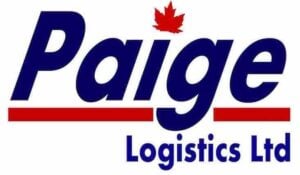Temperature Controlled Shipping
Dependable Transportation Of Your Temperature-Sensitive Goods
In the modern world of global commerce, shipping products from one location to another is a critical component of business operations.
Whether you’re shipping perishable goods, pharmaceuticals, or any other temperature-sensitive products, ensuring that they arrive in the same condition as when they left is crucial.
This is where temperature controlled shipping comes in. In this article, we’ll explore what a climate controlled shipping container is. the benefits of cold chain logistics, and how to implement it in your supply chain.
Ocean Freight Services China to Canada
Ocean Freight Services China to Canada
The Ultimate Guide to Keeping Your Products Fresh and Safe
Temperature-controlled trailers (reefers) are excellent for transporting perishable, temperature-sensitive cargo that requires precise temperature and humidity conditions. The truck fleet of Paige Logistics Transport comprises both heated and refrigerated vans.They can be carried onto 53-foot-long trailers or 20-foot-long trailers.
For larger and heavier cargo, we are equipped with wide vans, multi-axle vans and high cube vans. There are also ventilated vans available if your products require ventilation.
Temperature Controlled Trucks
The Temperature Inside Our Reefers Is Tailored To The Specific Requirements Of Your Produce. Our reefers are designed to preserve the freshness of your produce to prevent deterioration on the dock during transport.
We will regulate the temperature according to your specifications.To prevent respiration, the optimal temperature range for transporting vegetables is between 0°C and 4.4°C (32-40°F), while the range for fruit is between 2°C and 4°C (35-40°F).
Perishable Foods Transportation
Utilizing Temperature-Controlled Trucks To Safely And Promptly Deliver Perishable Food Loads
The temperature inside our refrigerated containers is tailored to the specific requirements of your perishable cargo. We will adjust the temperature to your specific requirements. For example, the ideal temperature for transporting seafood is -1.0°C (30.2°F), while the ideal temperature controlled freight shipping for transporting dairy and meat is 4°C (39.2°F) and 4°C (40°F), respectively.
Since more than 15 years ago, Paige Logistics Transport has transported food for key retailers and manufacturers. We are confident that we can also assist you transport your shipment.
Temperature Controlled Trucks
Transportation of Fresh Produce
Paige Logistics Transport’s fleet of refrigerated vehicles (reefers) can transport your fresh, firm, and undamaged perishable goods to all regions and states. Recognizing the delicate nature of fruits and vegetables, we are committed to transporting your produce in the same condition in which we received it using our top-tier temperature-controlled reefers.
Especially when it comes to the transportation of perishable items like food, medicine, and other temperature-sensitive goods, utilizing the service form temperature controlled shipping companies Canada is a crucial component of modern logistics.
Due to the rising demand for these products, it is essential to make sure they are carried in the proper manner in order to preserve their quality and safety.
“Cold chain logistics” is one of the terms most frequently used in relation to temperature-controlled shipping. The handling of temperature-sensitive goods from the point of origin to the final destination is referred to as “cold chain logistics.”
Temperature-Controlled Freight Shipping
Makes use of refrigerated trucks, warehouses, and other specialized equipment.
Temperature controlled cargo is essential in today’s fast-paced corporate climate to guarantee the timely and secure delivery of goods. Technology improvements now make it feasible to track temperature and humidity levels in real-time, enabling quick response in the event of any abnormalities.
In the pharmaceutical sector, where many pharmaceuticals need rigorous temperature restrictions to preserve their potency, cold chain logistics has also grown in significance. For instance, vaccines that are temperature-sensitive must be carried and maintained at particular temperatures to maintain their efficacy.
A crucial transportation service is temperature-controlled shipment for items that are sensitive to temperature. These temperature-controlled shipping companies are crucial for the food and beverage, pharmaceutical, and medical industries because these sectors depend on maintaining the proper temperature range for their products to be safe and effective.
Although there are difficulties with refrigerated trucking, the benefits, such as temperature control, extended shelf life, and quality control, make it an essential part of the supply chain industry.
Temperature-sensitive goods are transported safely thanks to the cold chain logistics services provided by Paige Logistics.
To guarantee businesses that their products stay within the acceptable temperature controlled shipping range throughout transit, we have the correct tools, the latest technology, and the necessary experience to manage less-than-truckload shipping too.

Author & Chief Executive Officer at Paige Logistics Ltd. → Experienced Operations Manager with a demonstrated history of working in the Transportation, Shipping, Trucking and the Railroad Industry.

